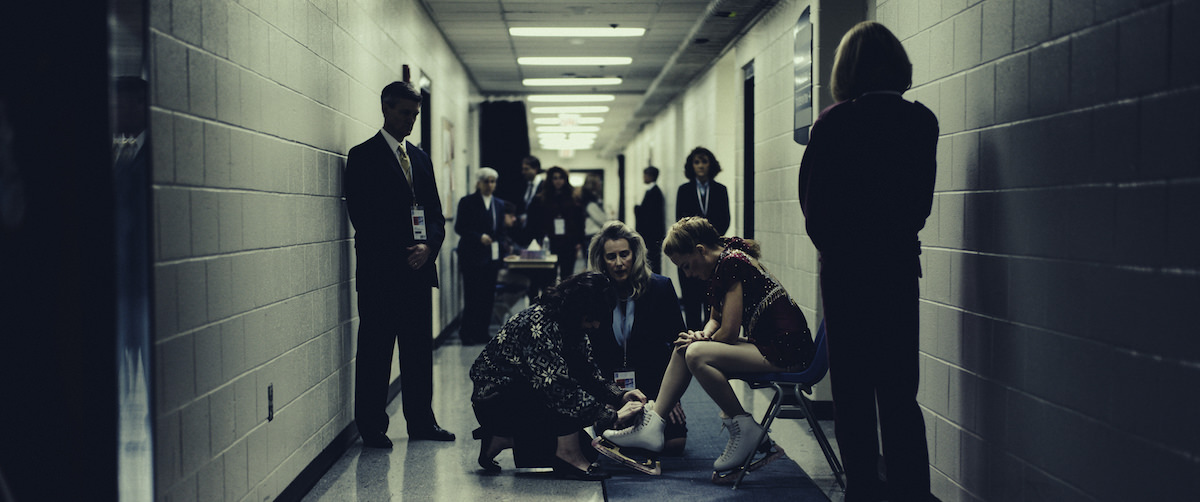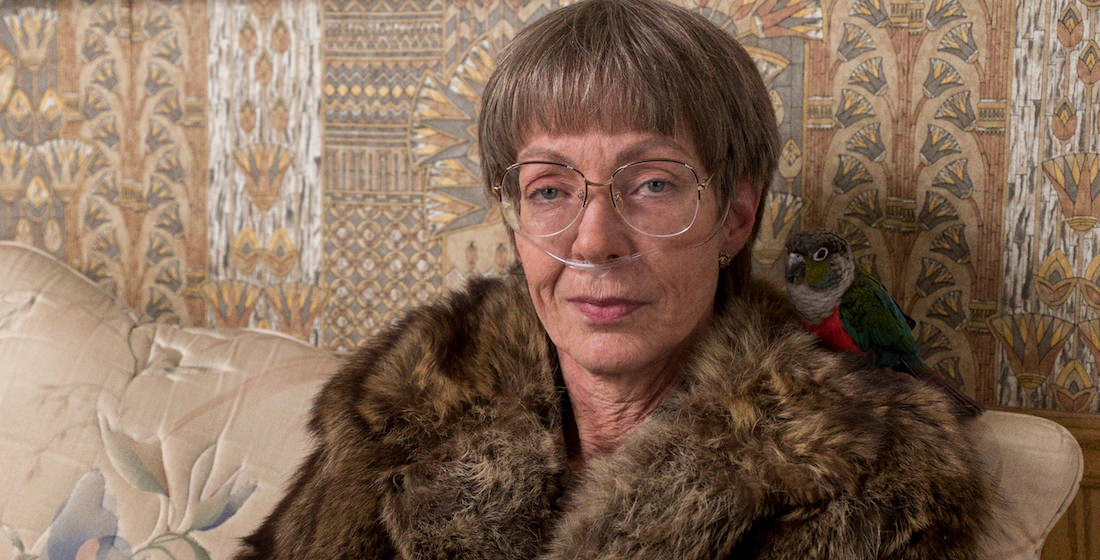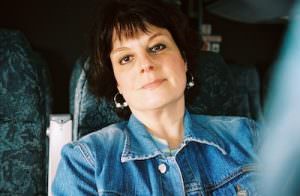I, Tonya Director Craig Gillepsie on Revisiting the Second Most Surreal Sports-Related Crime in the ’90s
Back in 1994, when tabloid TV shows such as “Hard Copy” and “Inside Edition” became the rage and CNN fed the public’s hunger for 24-hour news coverage, two crime-related stories revolving around sports figures would provide ample sustenance. One involved the arrest of football hero O.J. Simpson for the lurid murders of wife Nicole and Ron Goldman. The other was a good vs. evil scenario that pitted skating princess Nancy Kerrigan against the less-polished, more athletic Tonya Harding. Before both U.S. athletes competed in that year’s Winter Olympics in Lillehammer, Norway, Harding’s ex-husband Jeff Gillooly hired a hitman to attack Kerrigan during a practice session. She would recover from her leg injury and take the silver medal. A seemingly jinxed Harding came in eighth after a shoelace malfunction. And the TV ratings proved to be golden, thanks to the ensuing scandal-driven circus surrounding the two rivals.
Last year, the Simpson case was revived both as an Emmy-winning TV series and a multi-part, Oscar-honored ESPN documentary. This year, it’s Harding’s turn to be re-evaluated in I, Tonya, which is attracting its own awards-season buzz before it opens on Dec. 8. Australian director Craig Gillespie, 50, whose previous features include Lars and the Real Girl and the Fright Night remake, discusses how coverage of the so-called “The Incident” reflects the current voracious state of cable news, how he manages to strike a balance between dark humor and the disturbing outbreaks of domestic violence that Harding endured, and how I, Tonya star and producer Margot Robbie dedicated herself to becoming the best Tonya she could be.
https://www.youtube.com/watch?v=d2iy5y0YjGM
It is interesting that both “The Incident,” as it is known, and the O.J. Simpson murders happened in 1994. Both gave birth to the rise of a new breed of gossip-tinged TV news coverage. Bobby Cannavale is great as this self-aware and sleazy “Hard Copy” reporter – but what is with those exposed sockless ankles though?
His character, Martin Maddox, is a compilation of many reporters. And it was Bobby who came up with the look. I saw him with his cuffs rolled up and said, “Looks great.” He has that line when he calls his outlet “a crappy show all the ‘legitimate’ news outlets looked down on — then became.” The need for content reached a manic stage by this point. They sculpted the story of a working-class villain vs. a princess to get headlines. Twenty-five years later, Tonya Harding is still a punchline. I wanted to go back and re-examine the assumptions we made. Not just the media, but to hold a mirror up to us. We feed this frenzy by the way we process information. We chew up public figures and spit them out. As Tonya says to the camera, “You’re all my attackers, too.”
It makes sense to have this story be partly told documentary-style, considering the conflicting accounts by the parties involved and not just rely on them breaking the fourth wall.
We thought about To Die For but eliminated it as a reference since there are much more complicated multiple narratives going on. Those who are involved even answer one another onscreen. As is true with most documentaries, though, we are giving the audience subjective accounts and allowing them to make up their own minds about what is real. We have these tells, I believe, when they are lying or not lying. Such as when Tonya says to the camera after saying she and Nancy actually were friends : “What kind of friggin’ person would bash in their friend’s knee? Who would do that to a friend?”
You and Margot actually went to Portland, Ore., and spoke to Tonya in person. What was that experience like?
We had lunch with her two weeks before we started shooting. I wasn’t sure how she would feel about reliving this situation again after 25 years. But she was so warm and open. I was struck by how trusting she was about how she was portrayed. She gave us her blessing and felt we would do an honest portrayal. She watched it right before we showed it at the Toronto film festival. There were a few things she did not agree with but, overall, she was happy.

You seem to have a knack for doing films that mix dark comedy with potentially uncomfortable subject matter.With Lars and the Real Girl, in which Ryan Gosling falls for a sex doll named Bianca, you managed to make audiences care about their relationship. Now in I, Tonya, it is Harding’s history of extreme domestic abuse heaped upon her by her caustic mother, LaVona (Allison Janney), and her hothead husband.
Both films are very close to my heart. And both involve extreme behavior. With Lars, getting people interested to see it as a love story was a tall order. You have to overcome any prejudice and feel compassion. Similarly, I want them to empathize with Tonya and put aside their prejudices about her.
At some point, probably around the time when LaVona threw a knife at Tonya and it stuck in her arm, I stopped laughing and gasped instead. Similarly, you eventually become more moved than amused by Lars’ odd devotion to the inanimate Bianca.
I try to make film a subjective experience. What happens in Lars and in this, I construct it in a way that it becomes a personal choice. Some are laughing, while others say, “How can you laugh? This isn’t funny.” Some handle tragedy in different ways. There are moments in Lars that remind me of something Sidney Lumet said about a scene in Dog Day Afternoon, when Chris Sarandon (as a trans woman living as a man) is in a barbershop with New York City cops: “If anyone laughs during that moment, the film is not working.” When Lars kisses Bianca, you can hear pin drop. With the knife scene, the audience has been having a good time with the laughs. But suddenly they have to stop there, which I have found that they do.

When I heard Margot Robbie was cast as Harding, I thought, “Hmm, she doesn’t seem tough enough.” I watched Tonya’s rise and fall back then and what struck me was that even though she wasn’t that graceful, she was strong in the way that the male skaters were. But Margot managed to fully convince me.
She was attached to the film before I came on board. I had heard about a script for a Tonya Harding biopic starring Margot Robbie. I thought, “Wow, that is an interesting combination.” She can do drama and humor, as well as be accessible and vulnerable. I loved the idea of her playing this role, and was excited to work with her. The amount of prep she did for this film was staggering. I’ve had the pleasure of working with amazing people over years. But she was exceptional. She hired a trainer, a dialect coach, worked on her body language. She was so ready. It was such a courageous choice to do such an intense role that goes from age 15 to 44.
https://www.youtube.com/watch?v=iY2NLPKpK1Q
It probably was more important to get a great actress than it was to get a skilled skater for the role. Did you just superimpose Margot’s head onto someone else’s body when needed?
When we sat down with the skating coordinator six months before we started shooting, I immediately did storyboards for all the skating sequences that take place from 1986 to 1994. We picked signature moves to include. The skating choreographer, Sarah Kawahara (who actually created routines for Kerrigan back then), worked with Margot five times a week for a couple hours a day for about five months so she could achieve all the dance stuff like kicks, which are no easy feat on skates. We got into using doubles for the powerful speed skating into jumps. Such moves take so much training. We ended up doing 120 effect shots with 60 head replacements using Margot’s face.
I also appreciated the re-creation of what life was like in the ‘80s and the ‘90s. Big processed hair, acid jeans, shiny fabrics, skinny cigarettes, cheesy mustaches and just-right soundtrack oldies like “Barracuda” and “The Chain.” One thing I love is that you use Laura Branigan’s “Gloria,” which was heard during the skating competition in “Flashdance.” Was that on purpose?
Between our production designer and costume designer, it felt authentic. We really captured the era almost to a fault. As for the music, I chose the songs from an emotional level. The songs from the ‘80s were simplistic, and the ones from the ‘70s showed optimism and defiance. I liked the chaos of it, like when Scorsese uses a Frank Sinatra song to accompany a violent scene. We were sent 400 songs in prep. Outside of that, my wife recommended Dire Straits (“Romeo and Juliet” made the cut). As for “Gloria,” that was just an amazing coincidence. I liked the idea that the two guys hired to go after Kerrigan would be singing along with the song in the car.
Featured image: Margot Robbie as Tonya Harding in I, Tonya. Courtesy of NEON.



